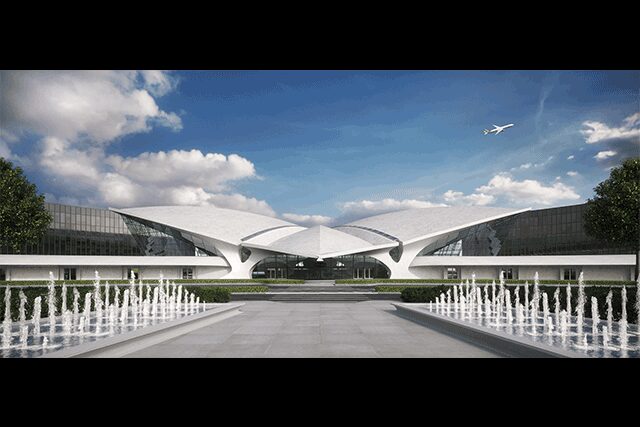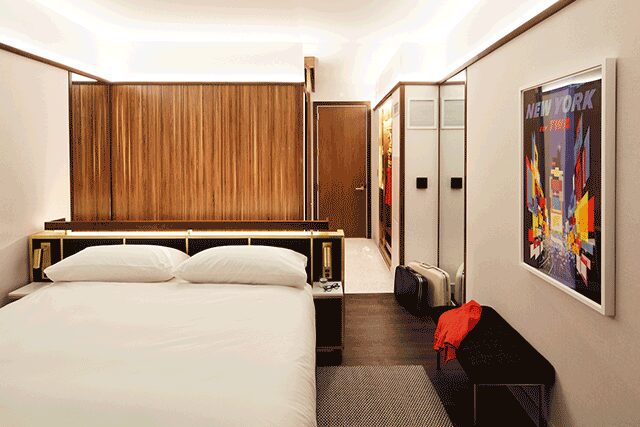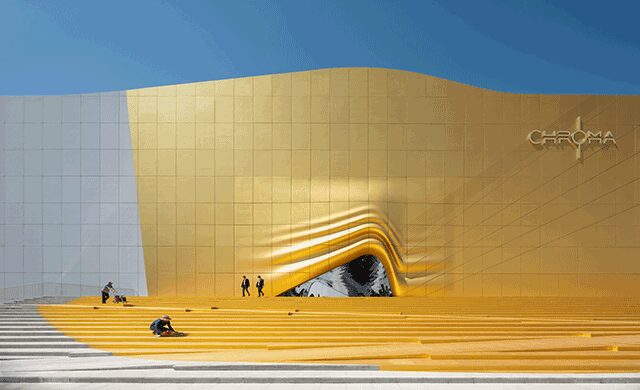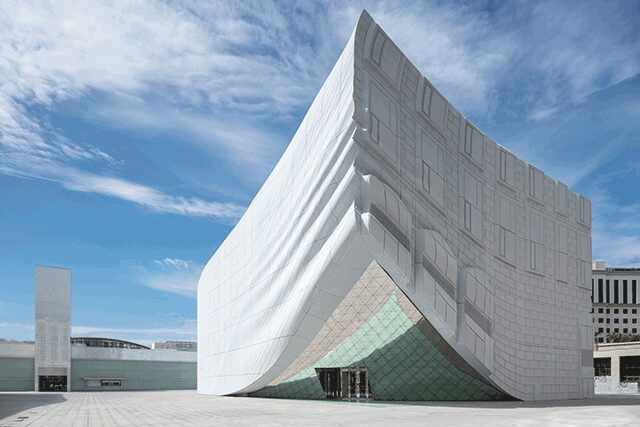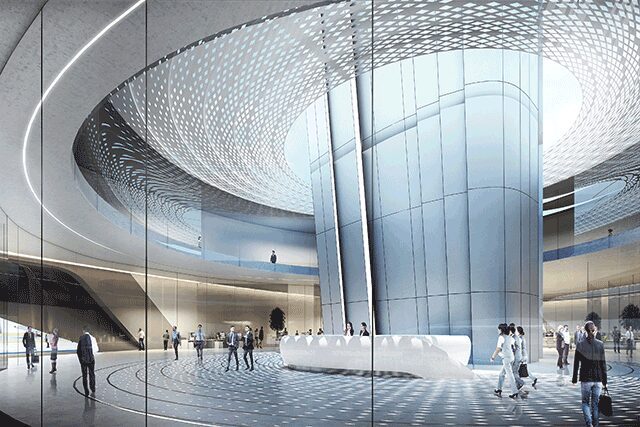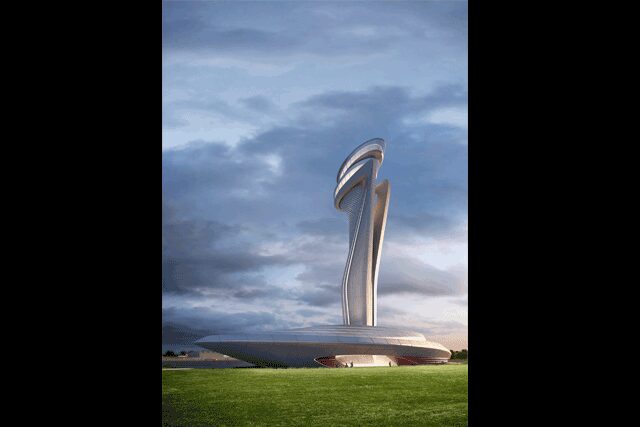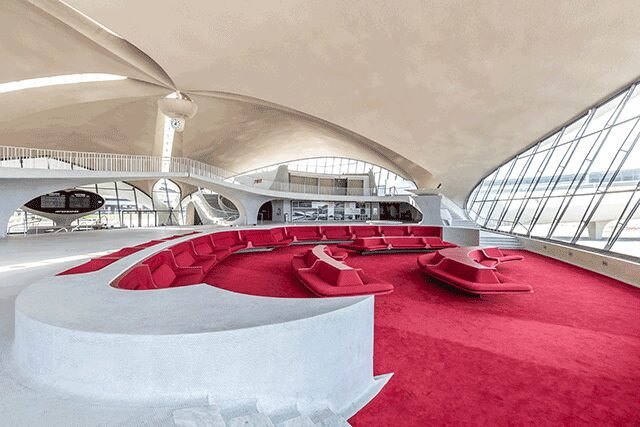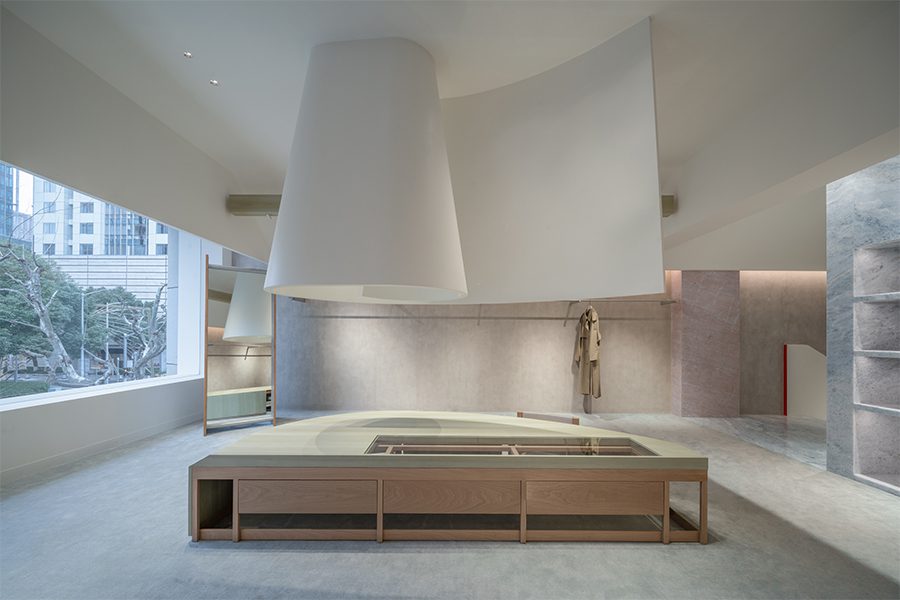Our take: Airport hubs have become their own vibrant micro-communities, a one-stop destination to shop, eat, sleep, and play. From a nightclub and an indoor theme park in Seoul, to the transformation of the TWA Flight Center at JFK into a hotel (in fact, Lodging Econometrics reports there are more hotels under construction around LaGuardia and JFK airports than at any time in the last 20 years), when it comes to air travel, the expectations are sky high.
The Imprint near Incheon Airport, Seoul: Housing a nightclub and indoor theme park, the Imprint from Rotterdam firm MVRDV, with interiors of the 60,000-square-foot nightclub spaces by New York-based Josh Held Design, comprises two buildings within the larger Paradise City casino and hotel complex. The challenge: to craft two structures without windows that are connected with their urban context. To that end, the designers creatively dreamed up liquid-like volumes that copy the façades of the surrounding buildings, “creating a relief pattern, like an ‘imprint,’” according to the design team, which was led by Winy Maas and Jacob van Rijs, two of the cofounders of MVRDV. Constructed with nearly 4,000 glass fiber-reinforced concrete panels (individually produced using 3D modeling files), they were painted white to emphasize their clay-like quality as well as the relief. For an impressive statement, half of one of the dramatically lit monolithic structures drips in a dazzling accent layer of gold paint that beckons airplane passengers as they descend into the city, while a section of each building (a corner of one, the middle of the other) lifts like curtains to reveal mirrored technicolor entrances. As the MVRDV team notes, “It turns the buildings into an art piece, [where] the boundary between art and architecture almost vanishes.”
Istanbul Airport: Planned as the largest airport in the world, the sustainably designed transportation hub (going for a LEED Silver certification) is a technological marvel, outfitted with intelligent lighting, beacon and geofinding technologies, virtual reality, 3D hologram systems (including a “magic mirror” to allow shopping passengers to see how products look on them), and smart kiosks. But the showstopper is the air traffic control tower. Inspired by the tulip, Turkey’s national flower and a symbol of Istanbul, its sinuous design is courtesy of global engineering firm AECOM and Italian automotive design firm Pininfarina. Glass fiber-reinforced concrete lends a 3D appearance to the exterior, allowing the firm “to build a journey outside traditional design processes,” explains Gianni Giuffrida, lead architect and project coordinator at Pininfarina. “It is pure, elegant, and iconic.”
TWA Hotel at JFK Airport, New York: The upcoming TWA Hotel (a collaboration between New York firms Stonehill Taylor, INC Architecture & Design, Lubrano Ciavarra Architects, and Beyer Blinder Belle) will give new life to Eero Saarinen’s iconic 1962 TWA Flight Center, which was designated a New York landmark in 1994 and officially closed in 2001. The new continuously curved façade, designed by architecture firm Lubrano Ciavarra, defers to Saarinen’s soaring concrete structure. “It is simultaneously luxurious and efficient, like a plane,” says cofounder Anne Marie Lubrano. The property’s triple-glazed, seven-layer laminated glass windows allow guests to sleep comfortably just a few hundred feet from the runway. Defined by clean lines, dark wood, brass finishes, and a martini bar, the 505 midcentury-inspired guestrooms from Stonehill Taylor boast views of the Flight Center through floor-to-ceiling windows. “Imagine watching the light change over the concrete shell,” adds Lubrano. “What could be more Jet Age glam than that?”
